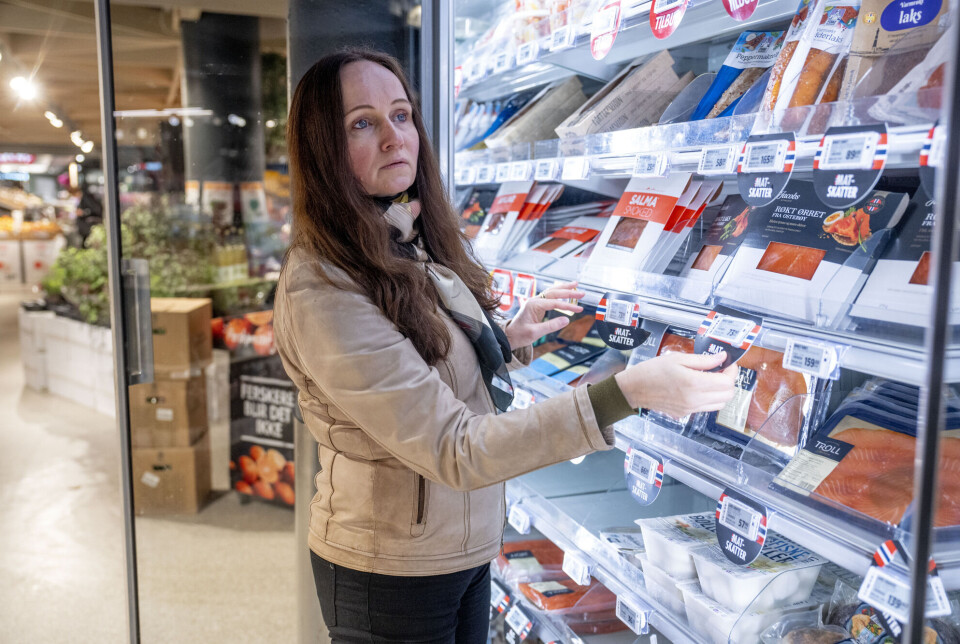
Economist: Family food expenses in Norway have increased 33 per cent in three years
Food expenses for a Norwegian family with two children have increased more than twice as much as the price growth of other goods over the past three years, according to economists at Consumption Research Norway (SIFO).
“When we worked with this data, we found that the food budget for our sample family increased by as much as 33 per cent from July 2021 to the same month this year. A family now has to spend well over NOK 44,000 (4,000 USD) more on food and drink than three years ago – without changing their consumption,” Ann-Kristin Ansteensen tells the Norwegian News Agency NTB.
She a senior adviser and economist at the Consumption Research Norway (SIFO).
Calcuations she has made for NTB show not only that price increase for food and drinks has been very high over the past three years – it has been significantly higher than the price increase for other goods and services in the same period.
Almost NOK 3,700 (340 USD) more expensive per month
The calculations are based on SIFO's reference budget and look at the trend in prices for selected groceries, assuming an ‘acceptable consumption level.'
The monthly grocery basket for the sample family used in the calculations – two adults, a five-year-old boy, and an eleven-year-old girl – has become almost NOK 3,700 ( 340 USD) more expensive.
The food committee for VG’s Matbørs, a price comparison site from one of Norway’s national newspapers, found that Rema 1000 – which is the cheapest grocery chain in both measurements – has become 22 per cent more expensive from September 2021 to October 2024. Individual items have increased significantly more:
- Stabburet Stabbur canned mackerel, 170 grams: 103 per cent, from NOK 13.50 (August 2021) to NOK 27.50 (October 2024)
- Bremykt butter spread, 500 grams: 40 per cent, from NOK 34.90 (March 2021) to NOK 48.90 (October 2024)
- Yellow cheese, cheapest option, per kg: 28 per cent, from NOK 78 (July 2021) to NOK 99.90 (October 2024)
- Gilde cooked ham, 110 grams: 30 per cent, from NOK 23 (August 2021) to NOK 29.90 (October 2024)
- Cucumber: 42 per cent, from 17.50 (August 2021) to 24.90 (October 2024)
- Maarud red pepper crisps, 250 grams: 30 per cent, from NOK 26.80 (February 2021) to NOK 34.90 (October 2024)
All of these examples are taken from VG's Matbørs, from the period that most closely matches the period covered by SIFO. It has not been possible to find VG data for exactly the same period that SIFO used in its calculations.
Hard to understand
Norwegians are therefore absolutely right when they notice that things have become more expensive. Food and drinks are in a class of their own. The price increase for other goods – when food and non-alcoholic beverages are excluded – was 14.1 per cent in the three-year period, according to Statistics Norway.
“It's not easy to understand why prices in this category have increased as much as they have,” says Ansteensen.
A broader examination of the sample family's total consumption shows that the increase in food and drink expenses was significantly higher than in other categories, such as ‘clothing and shoes,' ‘personal care,’ and ‘play and media use.’ Overall, the reference budget for SIFO's sample family has increased by around 12 per cent during the period.
As price growth seemed to accelerate uncontrollably – in the aftermath of the pandemic and partly due to Russia’s invasion of Ukraine – an unprecedented rise in interest rates began. The result was a severe blow to people's purchasing power, and the personal finances of many Norwegians came under heavy pressure.
Statistics Norway: 26 per cent price growth
It turns out that for goods in the 'food and non-alcoholic beverages' category on the consumer price index, price growth was 26 per cent during the three-year period between July 2021 and July 2024, according to calculations made by Statistics Norway for NTB.
Ansteensen explains that the price increase in the reference budget's food and drink basket is slightly higher than Statistics Norway's data, primarily because SIFO includes a different selection of goods. Their calculations are based on a monthly menu that follows government dietary guidelines.
She adds that the amount of food is also adjusted for different genders and age groups to reflect both energy needs and dietary recommendations.
While housing, transport, and heating expenses make up the largest share of household budgets, food and non-alcoholic beverages are the third largest expense, according to Statistics Norway's 2022 consumer surveys.
More expensive raw materials
The big growth in prices in the food and non-alcoholic drinks category is largely related to the fact that the prices of essential input factors also increased significantly during the three-year period, according Espen Kristiansen, head of price statistics at Statistics Norway.
It is possible to draw parallels between the increase in the price of food in Norway and price increases in Europe – and the reasons include that transport, energy, fertiliser, and raw material became much more expensive.
On top of it all, an increasingly weak Norwegian krone has contributed to the rise in prices, since many of the raw materials used in Norway are imported.
“There are several coinciding factors that caused food prices to rise sharply in large parts of the world. What's interesting is that food prices started to rise much earlier in the rest of Europe than in Norway. But the picture we see here at home is very much reflected in other countries,” Kristiansen tells NTB.
He says there are no indications that grocery chains took advantage of the situation to gain disproportionate profit during a period when everyone was prepared for and understood that prices would increase sharply.
———
Translated by Nancy Bazilchuk
Read the Norwegian version of this article on forskning.no
Related content:

Subscribe to our newsletter
The latest news from Science Norway, sent twice a week and completely free.





































